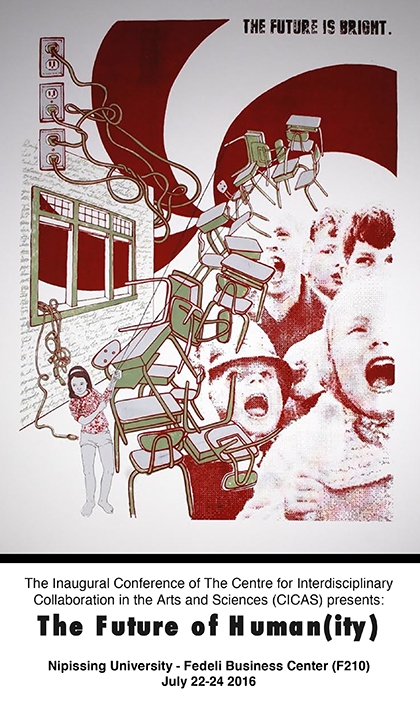The future of humanity in North Bay this weekend

In a world where people actively hunt Pokemon on city streets, where we ask our phones for directions to the nearest Apple Store or supermarket, and you can have hundreds of friends that you’ve never even met, what is humanity, and where is it going?
These are the sorts of questions being discussed at the 2016 CICAS Conference: The Future of Human(ity) at Nipissing University, July 22-24.
The Future of Human(ity) is the first international conference organized by the Centre for Interdisciplinary Collaboration in the Arts and Sciences (CICAS) at Nipissing University. Bringing together scholars from all over the world, the conference discusses what it means to be human in the modern world. From indigenous futurities, avatars, quantifiable identities, to technology and policy options, climate change, peace and social development, migration and religious intolerance, death tourism, and apocalyptic fiction, The Future of Human(ity) covers a range of topics as broad as humanity itself.
“We are looking forward to some amazing discussion from a wide range of perspectives and disciplines this weekend,” said Dr. Pavlina Radia, CICAS director. “As academics and educators, it’s our job to wrestle with big ideas and help discover clues to questions about what it means to be human and consider what our collective future might hold. We are excited to be welcoming brilliant minds from around the world to Nipissing University to share insights, ask questions and inspire thought.”
The conference begins at 10 a.m. Friday, July 22. Adam Nash, lecturer in Computer Games at RMIT University in Australia, delivers the first keynote address at 10:25 a.m. TitledActual Fantasy, Modulation Chains, and Swarms of Thought-Controlled Babel Drones: Digital Ontology in the Posthuman Era. Check out the full abstract here.
Other keynote addresses include:
Peter Eckersall, CUNY Graduate Theatre, USA:Towards a Dramaturgy of Robots and Object Figures;
Fred Spier, University of Amsterdam, Holland:Wished futures and expected futures: a reflection on scenarios of the future of humanity from the point of view of big history; and
Keith Hipel,University of Waterloo, Canada: Technology and Policy Options for a Low-Emission Energy System in Canada.
After a full day of presentations with topics like Human versus Cyborg Life: Quality versus Quantity, and The Embassy of Cambodia and the Future of Humanity, the conference moves to the White Water Gallery for a related exhibition that brings together the work of ten artists to consider what it means to be human today, and what it might mean in the future. Varied in media and approach, the works reflect changes in our experiences with nature, home, education, gender and biotechnology. Works include drawings combined with projection, screenprints that utilize design conventions of past futurist movements to present visions of a possible present, obstinately hand-made paintings with hand-stitched elements, and an interactive computer program where the viewer can create a human of their own design. The common ground shared by these diverse artworks is an exploration of the effects of science, technology and the social and natural environment on our humanity.
The conference continues Saturday and Sunday, beginning at 9 a.m.A full schedule is available here.
